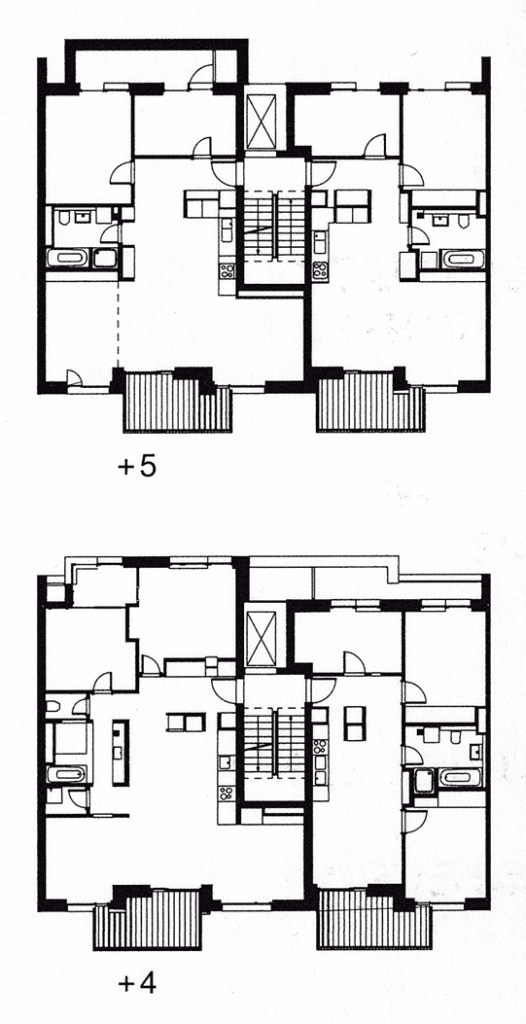Simplonstrasse 54 mixed-use building architecture project is the thirty-eight article on architecture projects from practice. This project is an urban design and architecture project located on the east side of the city of Berlin. A few kilometers away from the city center with adjacent rail links and public transport routes. This facility makes this project in unique and attractive location for selling, purchase, and rent. This architectural and urban development follows the typical style of urban design in the city though the concept is new. The front side of the building has street frontage access while the backside has access to an internal open space that is connected to the main roads from openings through the block. See Figure 1, the site plan of the project from Google.

The housing project on Simplonstrasse in Berlin is comprised of eight proposed developments on a single block. In 2012 two of the eight projects had reached the completion stage. The architecture firm appointed an architect who is working as the architect along with a collection of project managers and future inhabitants. This process is inherent to the design and development of each building to achieve an outcome of ‘shared authorship’. This idea is widely spread along most of the residential buildings in Berlin which is an architecture of the client needs. The client along with the architecture firm specifies his needs in terms of functional requirements and the budget allocated to the flat and the building as a whole. The idea is also common in some European countries like Norway ( see my article on that project ).
Simplonstrasse 54 was the first building to be completed in 2011. The design outcome is a tessellating combination of apartments that are fluid, each floor plan varying slightly depending on the needs of the inhabitants. Another feature is the execution of various vistas and viewpoints from the interior to the exterior. Each apartment has undergone extensive analysis to ensure that sunlight and views outside are optimal. The building design is a more modern architecture / Bauhaus style of architecture in terms of an open plan system. Though the designers show that their design is open and changeable client demand for this change is limited to some spaces but not all the apartments. See Figure 2, 3 the front street elevation and the backside landscape elevation.


As shown in Figure 4 the ground floor plan, +0, has the services in the street frontage façade and access to the studio office which has a mezzanine floor accessed by an internal staircase. The floor includes two apartments one small apartment and a larger size apartment having access to the first-floor part from an internal staircase. The two flats have access to the internal open space landscape from a raised platform and the building itself has direct access from the main road to the backside landscape through a corridor and exit at the end. The first floor, +1, has two apartments accessed from a central vertical circulation and one of the apartments has another part on the second floor accessed by an internal staircase. The other apartment has the remaining part of the apartment in addition to its part on the ground floor. Two apartments have a balcony to the rear side landscape area.

The fourth floor, +4, and the fifth floor, +5, are typical architectural design in terms of functional layout. The two large apartments do not have an extra part on other floors but only on the same floor. A slight difference in the architectural layout of the location of services, baths, and toilets, and its orientation. The two apartments have balconies to the rear open space landscape area. See Figure 5, the fourth and fifth floors of the building plans.

The roof floor plan was designed to suit the district heating plant service and sustainable design requirements of low energy usage by giving a protective layer to the roof that serves as a thermal layer in winter and summer in the roof garden. The roof garden is accessed by all the adjacent buildings and used by all tenants. See Figure 6, the roof floor plan and the garden layout and access to adjacent roofs.

The architecture of this building is an integration of all modern / Bauhaus architectural styles in terms of functional layout and external form. The architecture follows the sustainable architecture principles of low energy usage, maximum daylight access to internal space, common open space and landscape, safe routes on all building sides, and providing multiple functions for the building that add attraction and feasibility of usage.
previous projects from practice article:
Be First to Comment